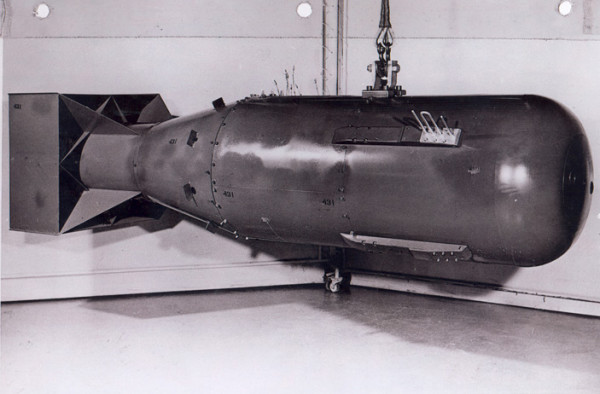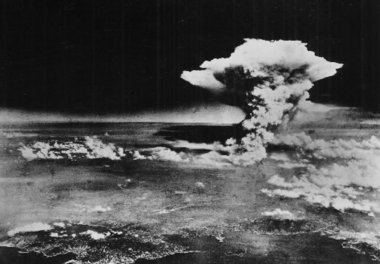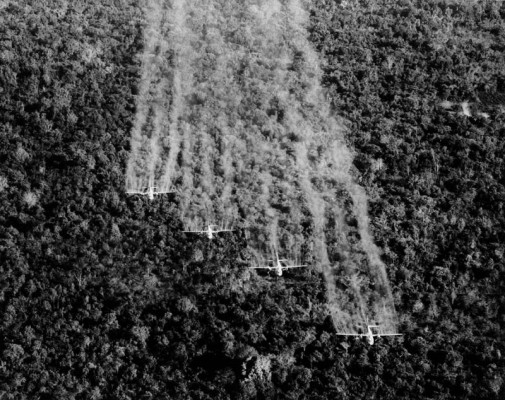You know, we are pretty good at killing fellow man, but we also like to see if we can be more efficient at it.
Science has given us a huge plethora of gifts which includes not only elements of comfort and luxury, but also a number of life-saving inventions, that have taken us out of the Stone-cold cave-dwelling life. But man did not miss his chances of twisting this same science to create things that threatens our very existence. Be it weapons of mass destruction or things that have done more harm than good, these inventions will always find themselves blacklisted in the history of science and technology.
10. Zyklon-B
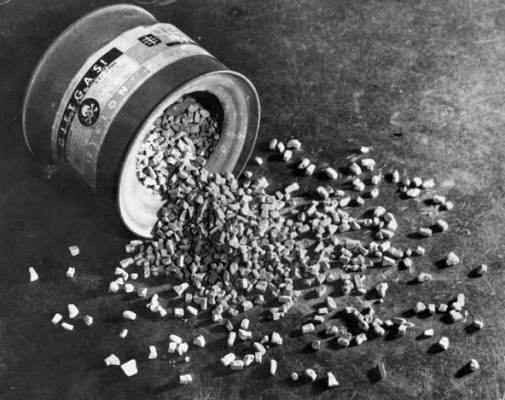
Zyklon B (hydrocyanic acid), also called Cyclone B, was the trade name of a cyanide-based pesticide invented in Germany in the early 1920s. Bruno Tesch, one of the inventors of Zyklon B, played an essential role in the misuse of this chemical during the World War II. It was originally invented as a cyanide-based pesticide and was used for pest control in agricultural fields and factories, but the Nazis discovered through experimentation the gas could be used to kill humans. During the killing process, prisoners at Auschwitz and other killing centers were forced into the air-tight chambers that had been disguised by the Nazis to look like shower rooms. Once the chamber was full, the doors were screwed shut and solid pellets of Zyklon-B were dropped into the chambers through vents in the side walls. Upon being breathed in, the vapors combined with red blood cells, depriving the human body of vital oxygen, causing unconsciousness, and then death through oxygen starvation. Those inside died within 20 minutes. The Holocaust is one of the darkest events in history, when around 1.2 million people, including about 960,000 Jews, were gassed to death in the concentration camps during the World War II.
9. The Guillotine
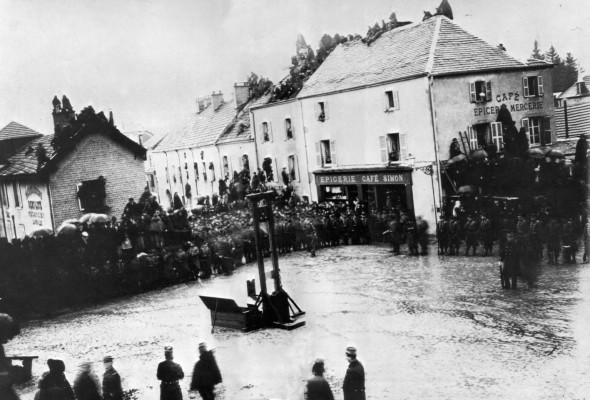
A guillotine is a device designed for efficiently carrying out executions by beheading. It was invented at the end of the 18th century by a group led by Joseph-Ignace Guillotin, a Parisian anatomy professor and it became famous during the French revolution, when history witnessed the most number of decapitations as punishment which was turned into a form of public entertainment. This execution device used a lunette to immobilize a victim’s neck and a crescent blade to chop off the head. It was thought to be a humane method of execution, but led to more violence, including France’s “Reign of Terror” from 1793 to 1794 when as many as 40,000 were executed by the Guillotine. It was also used during the Algerian War for the execution of the prisoners. The guillotine continued to be used as a method of public execution until 1977 and was retired as France’s main form of execution in 1981 when France abolished the death penalty. The last person guillotined in France was Hamida Djandoubi, on 10 September 1977. Intended as a “humane” method of execution, it was actually one of the most hatred instruments in the world. It now adorns the museum and keeps the memory of the horrors of notorious human inventions.
8. Sarin gas
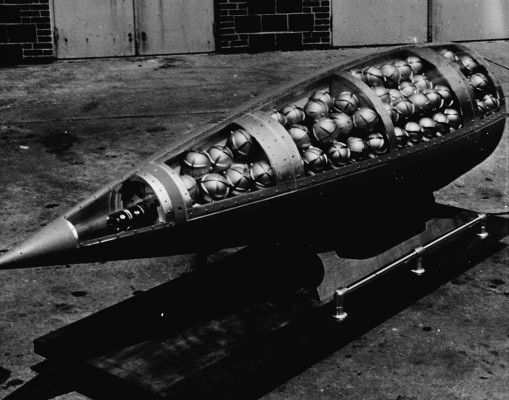
Sarin gas is one of the most widely used and effective nerve agents because a simple drop of it can be fatal in only a few minutes. It is a colorless and odorless liquid at room temperature but evaporates rapidly when heated. After release, sarin will spread into the environment rapidly and present an immediate but short-lived threat. Discovered by chance in 1938 by Dr. Schrader, a German chemist specializing in the discovery of new insecticides, this chemical was put to misuse by the Nazis as a chemical weapon. It has been used time and again by the military as a nerve gas for mass destruction of enemy territories, including the Halabja poison gas attack, Iran–Iraq War, and Syrian civil war. Sarin is listed among the weapons of mass destruction and is the carrier of a horrible death. The gas causes massive nerve damage to those who come in contact with the gas and can eventually cause death due to paralysis of the lung muscles.
7. DDT
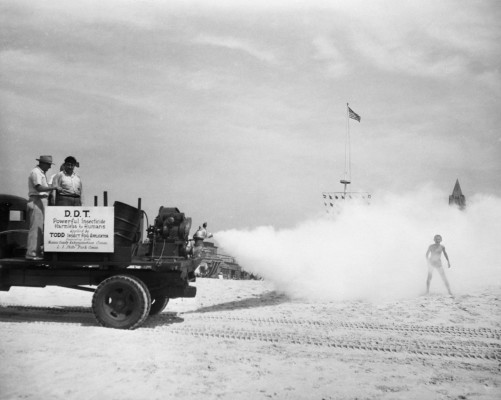
DDT was one of the first chemicals in widespread use as a pesticide. In the late 1930s, the U.S. military undertook preparations to defend soldiers against one of the most lethal enemies on the battlefield: insect-borne diseases (a bacterial disease spread by lice had killed 2.5 million people, military and civilian). The military needed an insecticide that could be safely applied as a powder to clothes and blankets. DDT eventually emerged as the insecticide of choice: it worked at low dosages and it worked immediately. However, the chemical has extremely hazardous effects on public health and the environment. Initially synthesized by an Austrian student in 1873, DDT (dichlorodiphenyltrichloroethane) remained a laboratory oddity until 1939, when Swiss chemist Paul Hermann Müller discovered the potent insecticidal properties of this synthetic organochlorine. It is proved to be carcinogenic and threatens small animals and birds and also quite toxic to humans and can lead to heart and lung disease. People are most likely to be exposed to DDT from foods, including meat, fish, and dairy products. DDT can be absorbed by eating, breathing, or touching products contaminated with DDT. In the body, DDT is converted into several breakdown products called metabolites, including the metabolite dichlorodiphenyldichloroethylene (DDE). DDT and DDE are stored in the body’s fatty tissues. In pregnant women, DDT and DDE can be passed to the fetus. Both chemicals are found in breast milk, resulting in exposure to nursing infants.The United States banned DDT in 1972, but some countries still use the chemical for the control of mosquitoes that spread malaria.
6. Agent Orange
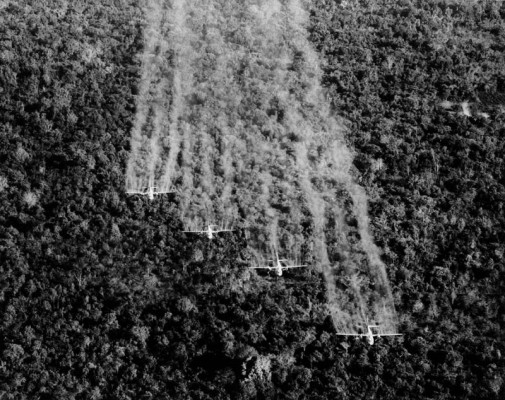
Way back in 1943, plant biologist Arthur Galston developed a chemical that would accelerate the growth of soybeans and allow them to be grown in areas with a short season. He started to work with triiodo benzoic acid as a plant growth hormone. However, in high concentrations, Agent Orange actually defoliated the soybeans crops and destroyed them. Not soon afterward, the U.S. Army, working with the University of Chicago, learned that this compound could destroy the crops of enemies and went on to be used in the Vietnam War, among other places. It was supplied to the U.S. government in orange-striped barrels. The U.S. sprayed about 19 million gallons of herbicides over 4.5 million acres of land in Vietnam. The spraying was known as Operation Ranch Hand and it generally lasted from 1961 until 1971. In total, this caused more than 400,000 fatalities and disabilities and half a million birth defects.
5. Chlorine
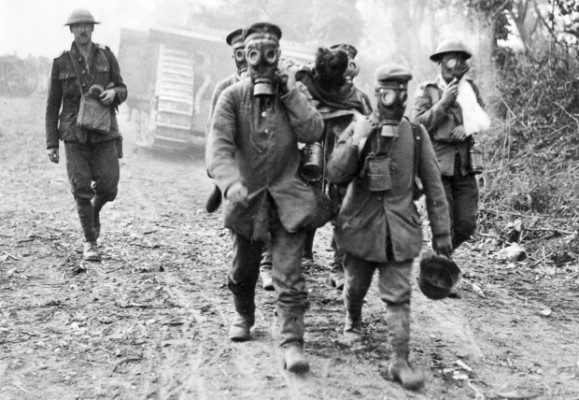
With all of the new chemical inventions and discoveries of the 19th and early 20th century, World War I was known as the “chemists’ war.“ There were many new deadly gasses and chemicals used in this war that had never been used as weapons before. Chlorine gas, also known as bertholite, was first used as a weapon in World War I by the Germans at the Second Battle of Ypres in April, 1915. They launched thousands containers of chlorine gas across the battlefield into their enemy’s territory, killing hundreds of French troops. Chlorine gas effects the body in many ways. It causes burning in the eyes, uncontrollable blinking, redness and inflammation along with the production of tears. It can also burn the cornea, killing the cells within it. The effects of chlorine gas on the lungs are extensive and can even lead to the collapsing of the lung. Once inhaled chlorine gas causes nose and throat irritation, coughing and choking, vomiting, hoarseness or complete loss of voice, severe chest discomfort, and finally shrinking of the lower airway. All of those things happen rapidly once a person is exposed; within the next hours the fluid will also begin to build up in the lungs.Chlorine gas also affects the skin. Exposure can cause irritation, burning pain, inflammation, and blisters. It can also cause more severe symptoms such as burns that lead to cell death and the damage of tissues.
4. Land Mines
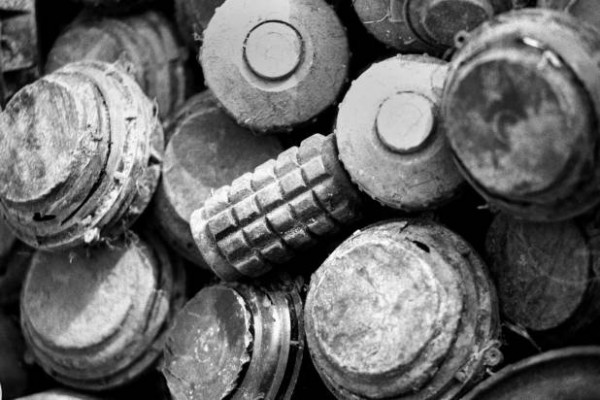
Land mines are among the most vicious and deadly inventions in history. The first recorded use of explosive land mines was in 1277 AD in China. These are bombs that are buried underground along the perimeter of a territory to create defensive tactical barriers and to prevent the enemies from trespassing. Such a device is typically detonated automatically by way of pressure when a target steps on it or drives over it, and may cause damage by direct blast effect, by fragments that are thrown by the blast, or by both. Not only that they are deadly, but they cause death of civilians, sometimes even many years after the war or the conflict that required the use of these mines. The problem is that many land mines are still buried underground, and many have been injured and killed as a result of unremoved land mines. Land mines continue to kill or injure at least 4,300 people every year, even decades after the ends of the conflicts for which they were placed.
3. Freon – CFCs
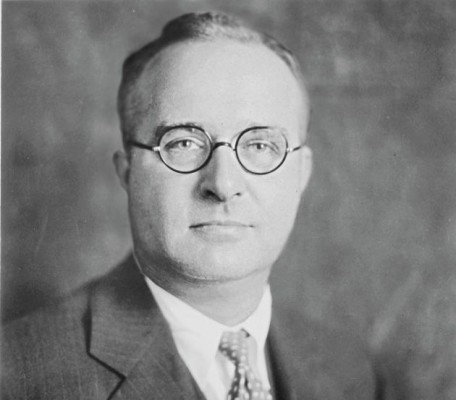
Scientist Thomas Midgley discovered the CFC Freon while working for General Motors in 1930. He discovered the Freon as a safe refrigerant to replace the highly toxic refrigerants such as ammonia in common use. However, Midgley’s discovery resulted in damage to the earth’s Ozone layer. His other famous idea was to add tetraethyl lead to gasoline to prevent “knocking“ thus causing worldwide health issues and deaths from lead poisoning. Because of his discovery, Midgley is called the man who “had more impact on the atmosphere than any other single organism in Earth’s history.“ As more and more products are using Freon for various purposes, traces of ozone holes have been reported, mainly over the South Pole. It can not only unbalance the functioning of ecosystems, but enhanced ultraviolet radiations have increased the rate of skin cancer in various parts of the world. Thankfully, the Montreal Protocol (an international treaty designed to protect the ozone layer by phasing out the production of numerous substances that are responsible for ozone depletion) has banned the use of the product, and various replacements for CFCs have already been found before further damage is incurred on the environment.
2. TNT
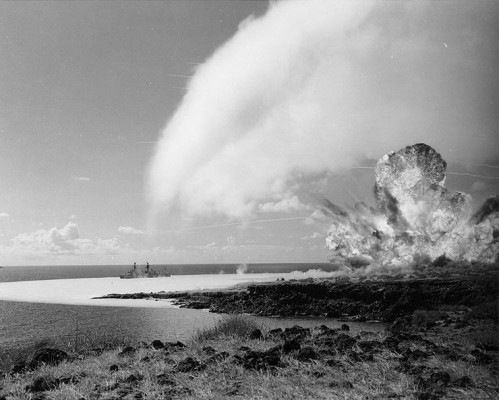
TNT (trinitrotoluene) is one of the most commonly used explosives for military, industrial, and mining applications. It was developed in 1863 as a harmless yellow dye by German chemist, Joseph Wilbrand. He had no idea that he created a weapon that would change the face of the world. In 1902, it was discovered that TNT could also be used as a destructive explosive if used in a certain way. The Germans recognized the potential of TNT when it began filling its artillery shells with it. These shells could pierce the armor of its enemies, especially the armor of the ships. During World War I and World War II, both sides used TNT as a weapon against their enemies, creating massive amounts of destruction and loss of life. Because of its effective and powerful nature, TNT still finds use in the military and construction companies.
1. Atomic Bomb
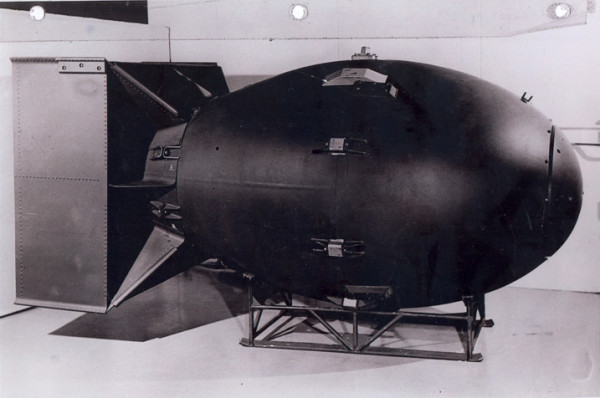
60 inches in diameter and 128 inches long, the weapon weighed about 10,000 pounds and had a yield
approximating 21,000 tons of high explosives (Copy from U.S. National Archives, RG 77-AEC). source
Weapons whose explosive output is exclusively from fission reactions are commonly referred to as atomic bombs or atom bombs. These bombs are the deadliest invented so far. The “Little Boy” and the “Fat Man” (a gun-type weapon and an implosion-type weapon, used in the atomic bombings of Hiroshima and Nagasaki) have already shown the world the destruction that an atomic bomb can wreak upon the world. Developed as a part of the Manhattan Project (a research and development project that produced the first nuclear weapons) during the World War II by the United States. On August 6, 1945, at 8:16 a.m. Japanese time, an American B-29 bomber, the Enola Gay, drops the world’s first atom bomb, over the city of Hiroshima. Approximately 80,000 people are killed as a direct result of the blast, and another 35,000 are injured. At least another 60,000 would be dead by the end of the year from the effects of the fallout.
It remains the deadliest invention and a constant threat to world peace.
